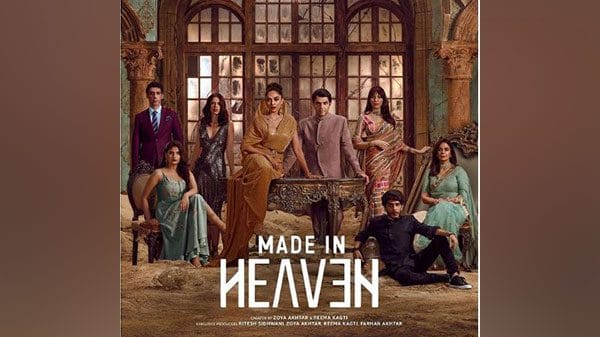I am a fan of Indian cinema and relish all genres of it. Watching Made in Heaven on Amazon Prime Video was rewarding. I fell in love with the first season, and like many others, waited for the second one. The series approaches, with wisdom and precision, important social issues of gender, LGBT, caste, and family intricacies of Indian society through lavish upper-class weddings. Another bonus for me, of course, is the character of Delhi, a place where I lived on and off for many years and for which I have a particular fondness. The episodes in the second season touched on the difficulties of the LGBT community, the colonial ideal of white beauty, domestic violence, middle-aged love, the difficulties of being a female Bollywood actor, inter-caste marriages, and the deep-seated shame Dalits endure no matter what they achieve, materially.
But the joy of the first five episodes only turned into disappointment with the sixth one, named Warrior Princesses. It dealt with the delicate issue of polygamy among Muslims. In India, the practice finds protection under the Sharia law and the legal system. ThePrint columnist Amana Begam Ansari also touched upon the subject in these columns. After Parliament declared Triple Talaq as illegal in 2019, the debate on polygamy is open in the country.
The sixth episode in the series touched a personal chord — the representation of the white foreign woman in Indian cinema and popular culture. The way it has been dealt with is problematic.
Also read: ‘Made in Heaven’ made India curious about Buddhist weddings—This is how they happen
What left me disturbed
In this episode, the second person the Indian man chooses to marry is a white blonde woman. Perhaps polygamy isn’t the only threat to the peaceful Indian family. A ‘foreign vamp’ woman too is.
I am an Israeli woman and a scholar of India Studies, married to an Indian Hindu man. My husband’s family does not recognise our marriage and our child. I have never met them, and I doubt if such a meeting will be possible. A traditional religious Indian family might have multiple reasons for their negative attitude toward such a union. And if there is one thing that has furthered this bias beyond measure it is the portrayal of western blonde and white women in Hindi cinema since the 1970s.
Many can easily recall scenes from Bollywood movies in which the western white woman (or westernised Indian woman) smokes and drinks alcohol — Preeti in Purab Aur Paschim or the foreign women in Shah Rukh Khan’s Pardes (1997). Often such characters’ sexuality is extroverted, erotic, and moral norms do not matter to them. They are vamps who covet the wealth of the Indian man. These characters contrast with the Indian woman protagonists in the same movie who are shown valuing tradition, femininity, motherhood, chastity, and self-sacrifice. An Israeli friend who is also married to an Indian man told me recently, “Every time I see a white woman in an Indian movie, I prepare myself for her to be a really negative character.”
In Made in Heaven’s first episode, a bunch of white women are shown hired as waitresses at a Punjabi wedding, dressed in short skirts with deep necklines serving alcohol. When a drunk guest tries touching one of them inappropriately, a riot breaks out. The episode explores the lens through which Indian men and society look at these women – they are rampant, provocative, available, and they probably like it too. The series also captures the disgust such women go through, because of the attitude Indian men have toward them.
Also read: Made in Heaven’s brave new world walks a thin line—Dalit wedding & UCC-hailing Muslim woman
The bias
The sixth episode reveals the paradox of the makers. A foreign woman is at the centre of the plot. A Muslim man (Wasim), who is married to Shehnaz, plans to take a second wife. The second woman is a “younger, blonde-haired Albanian wife”. She smokes and secretly dyes her hair blonde because she knows that’s what attracts the gullible Indian man. Unlike her wealthy husband-to-be, she is a flight attendant without much financial means. In a conversation with her sister and mother, she explicitly says it is worth tolerating the “other wife” situation for the money and wealth around her. That way, she will no longer have to struggle in life. In contrast, the first wife (Dia Mirza) is shown as full of grace, pleasantness, care, dignity, and authenticity. We learn that she married her husband before he acquired a fortune and bore him two sons.
One wonders why the makers of this otherwise brilliant series felt that a white blonde woman as the second wife would help them underline the brutality of polygamy. Also, the Indian man is shown in dilemma, manipulated by the blonde who is after his wealthy life. The ill intentions of the foreign woman are starker than the poor character of the man who thinks he is not doing wrong by practising ‘legal’ polygamy. Couldn’t the story have been about having a second wife and that she, no matter who, did not have to be evil? Why often it is the case in Indian scripts that malicious foreign women are the ones chasing Indian men and destroying their families and homes?
As a foreign woman married to an Indian man, I expected the creators of the series, who are trying to produce feminist, progressive, and critical social content, to be more careful with their representations of women. Yes, even white blonde women.
Michal Erlich is PhD candidate at the Asia Studies Department, Tel Aviv University, Israel. Views are personal.
(Edited by Anurag Chaubey)






